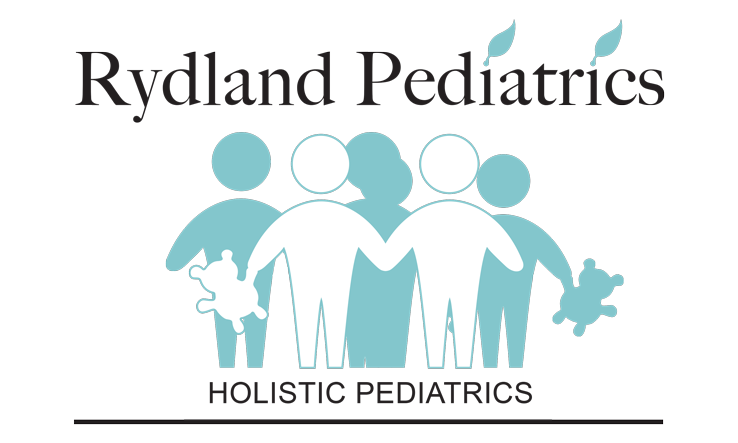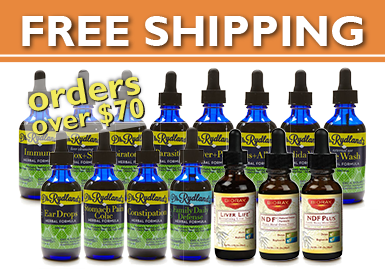Opt for Organic Products
- July 11, 2014
- Health and Wellness
We know that we need to eat a variety of fruits and vegetables every day in order to look and feel our best. But, along with vitamins, minerals, phytonutrients and fiber, every bite of fresh produce also has the potential to offer you a variety of pesticides, fungicides and various chemical additives. In fact, a recent USDA study showed that 73 percent of conventionally grown produce contained at least one pesticide residue. And that figure doesn’t take into account the chemicals used to make our produce look glossy, last longer or ripen on the truck as it makes the long journey from green fruit to grocery store shelf. Should we be concerned?
Just How Dirty Is Our Food?
According to the USDA Pesticide Data Program (PDP) in 1996, a conventionally grown apple is likely to contain residues of at least four pesticides, and some individual apples had as many as 14 different residues. Other USDA research showed that over 90 percent of the tested conventionally grown apples, celery, peaches, pears, and strawberries had pesticide residues and likely contained multiple residues. Testing done by the PDP in 2002 determined that 72 percent of the apples tested were positive for the pesticide thiabendazole; ten percent had residues of cancercausing captan; and others had traces of highly toxic organophosphate insecticides, including phosmet (13 percent) and anzinphos methyl (37 percent). Yet, despite these alarming apple figures, the environment watchdog agency known as the Environmental Working Croup (EWC) determined that strawberries are the single most heavily contaminated fruit or vegetable.
The FDA states that imported food is three times more likely than domestic products to contain illegal pesticide residues. And while chemicals like DDT have been banned for use in the U.S. since 1972, they are still manufactured and exported for use in developing countries-who then export their produce back to the U.S.
It Starts With Gas
Many pesticides and fertilizers begin as petrochemical compounds, meaning that they derived from oil, natural gas, coal, or tar. Several petrochemicals are known endocrine disrupters, which wreak havoc on our hormones. According to the Agency for Toxic Substances and Disease Registry, polycyclic aromatic hydrocarbons (PAH) are by-products of the incomplete burning of coal, gas and oil, and are used to make some pesticides. Studies show that PAHs cause tumors in laboratory animals through inhalation, via food, or through prolonged contact with skin.
PAHs are also known xenoestrogens (“zeeno”-estrogens) or false estrogens, and they easily bind to estrogen receptor sites on our cells. Unlike our natural estrogen hormones that do their jobs and move on, however, estrogen-mimics aren’t as easy to turn off. They cause cellular functions to change, often with undesirable results. False estrogens, for example, have been associated with several forms of estrogen-related cancers, and multiple studies show the link between PAHs and breast cancer.
Although some might argue that xenoestrogens found in pesticide residues are present in levels that cause no observable effect (NOE) in laboratory studies, research indicates that combining a variety of xenoestrogens below NOE produces an estrogen-mimic effect. When we consider that xenoestrogens are also present in many of our body care, fragrance and home cleaning products, it quickly becomes apparent that our bodies are constantly exposed to these chemicals.
What About Organic?
While organic foods are grown without the use of chemical fertilizers, pesticides, herbicides, and cosmetic touch-ups, they are not completely safe from chemical residues. As long as there is wind to blow and nearby fields that are farmed with chemicals, there is always the risk of overspray or drift. As well, persistent organic pollutants, including dioxins, polychlorinated biphenyls (PCBs), and polybrominated diphenyl ethers, survive for many years in the soil.
So, is it worth the extra expense for organic produce if they are susceptible to chemical residues? A review performed by the Consumer‘s Union says yes. Using data collected by the USDA, the Consumer‘s Union, and the California Department of Pesticide Regulation, including more than 94,000 samples from more than 20 different crops, researchers found that organic foods typically contain pesticide residues only one-third as often as conventionally grown foods and are far less likely to contain multiple residues than conventionally grown produce.
This Will Bug You
And then there are the bacteria. A 2004 study of the surface of cantaloupes from Texas and Mexico showed that of the total 1,735 samples collected, 31 fruits tested positive for Salmonella. But Salmonella isn‘t your only worry: Listeria monocytogenes, Escherichia coli 0157:H7 (E. coli) and other foodborne pathogens are also serious health concerns.
Cosmetic Concerns
The substances found on your food are not always the residues left over from farming: some chemicals are intentionally applied to make produce look more appealing. While chemical residue testing doesn‘t take these chemicals into account, that doesn‘t make them any less toxic. In fact, many of them start out the same way as farming residues-as petroleum.
According to the FDA, for example, coumarone-indene resin can be safely used to coat grapefruit, lemons, limes, oranges, tangelos, and tangerines. But research conducted by the National Toxicology Program showed that benzofuran (a chemical used to make these resins) clearly causes cancer in mice. These resins also contain naphthalene, a crude heavy coal-tar solvent that seems to be a very popular additive to foods-but popularity does not guarantee safety.
According to the Agency for Toxic Substances and Disease Registry, exposure to large amounts of naphthalene might destroy some of your red blood cells when ingested. The Environmental Protection Agency (EPA) reports that acute naphthalene exposure is associated with liver and neurological damage. Workers who are chronically exposed to naphthalene suffer cataracts and retinal damage, and the EPA has concluded that naphthalene is a possible human carcinogen. Naphthalene is also a component of sulfated butyl oleate, used in dehydrating grapes to produce raisins. Think of it as an added treat.
Synthetic paraffins are also used to coat many citrus fruits. Paraffins are bonded with such chemicals as isopropyl alcohol, a derivative of propylene that has been linked to chronic kidney inflammation. Oxidized polyethylene is considered to be a safe protective coating for many foodstuffs, including avocados, beets, eggplant, mango, papaya, hazelnuts, pecans, walnuts, and all nuts in shells. The FDA allows polyethylene to contain limits of hexane, linked in animal studies with signs of nerve damage, lung damage and, in very high doses, damage to sperm-forming cells. The mixture can also contain xylene, a chemical that may cause harmful effects to the fetus of a pregnant woman. Even a natural wax, like the beeswax used to coat apples, can be lethal to anyone who is allergic. And you‘d never know it was there.
How To Eat Safely
Opt for organic foods as often as possible. Although organic foods might not be completely free of contaminants, they are a much better option than conventionally-grown produce. To reduce over-exposure to any one chemical, be sure to include a variety of fruits and vegetables in your diet. Choosing foods that are locally-grown and in season also helps to reduce your exposure to chemical cosmetics and preservatives, particularly if you can‘t always find organic fare.
It‘s important to realize that when determining chemical residues on our foods, researchers wash them first. For example, apples are washed and stems and cores are removed. Inedibles are removed before washing asparagus, spinach, broccoli, celery, carrots, cucumbers, mushrooms, and potatoes. Onions are peeled and washed, while pineapples are washed, peeled, and cored before they are tested. So residue levels that researchers record are approximately the same as you would have after you prepare your foods at home. Chilling, isn’t it?
As you wash your produce, remember that day in high school science class when you learned that oil and water don‘t mix: because many of the pesticides, fertilizers and chemical additives used on fresh produce are derived from petrochemicals-mean ing oil-a quick splash under the water tap is not going to be very effective for cleaning your food. Instead, wash your food, including organic produce, with a specially designed produce cleanser. As always, when choosing a product, read the label to be sure that the formula contains ingredients that will help you with your quest for clean food.
Look for a produce wash that uses natural surfactants to break down and remove chemical residues. (Surfactants are water-soluble surface-active agents that attach to oils to bring them into solution so that they can be rinsed away.) Natural antibacterial ingredients, such as grapefruit seed extract, are also useful for removing germs from the surface of your foods. Some choices on the market are proven with clinical testing to remove residues and coatings (bacterial claims are not allowed), so you might want to start with one of those products. Feel free to call the manufacturer of any cleansing product that you are considering using to find out if they have proof that their product works.
Staying healthy with fruits and vegetables shouldn’t leave you with a bad taste in your mouth. Date: Oct 20, 2005
© 2005 Total Health. via ProQuest Information and Learning Company; All Rights Reserved
Dr. Eric N. Rydland, graduated from the University of Miami undergraduate and School of Medicine in 1974 and 1978 respectively and completed his pediatric training at the University of Miami Affiliated Hospitals in 1981. He is pediatric board certified by the American Board of Pediatrics. During his nearly 30 years of clinical experience Dr. Rydland has researched and studied the holistic field and alternative treatments. Integrating these holistic treatments with traditional medical care based upon the wisdom only God can give, has given thousands of patients optimal health benefits. This has been achieved through work with many published authors in the alternative field, his experience, and devine wisdom. In addition to the kidsWellness products our site features other products he uses in his clinical practice. Dr. Rydland is a frequent guest on radio and television, speaker at medical seminars and public conferences, and a published author. He is the Founder and Developer of kidsWellnessTM Incorporated (October 1999)
Upcoming Events
- No Events
WHAT OUR PATIENTS ARE SAYING
Testimonial 1
How I wish I weren't writing this and that by some feat of providence we could have brought you with us to Texas – I don’t know if I’ll ever have the confidence and esteem for another pediatrician that I felt when consulting with you about Frank’s health. Thank you so much for being there when we needed you! Again thank you for everything!
Testimonial 2
Sheri, Hollywood
Sheri, Hollywood
Testimonial 3
Elizabeth, Miami Springs
Elizabeth, Miami Springs



